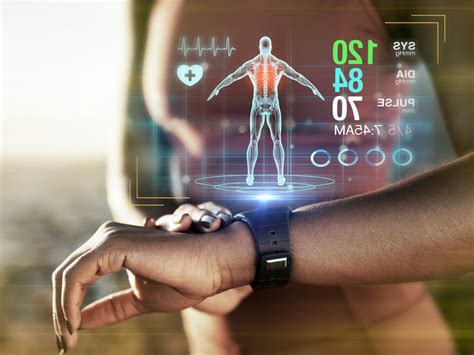In recent years, the world of fitness has undergone a significant transformation, thanks in large part to the rise of wearable sports technology. Gone are the days of relying solely on manual tracking methods or vague estimates of physical activity. Today, individuals can access a wealth of data and insights that help them optimize their workouts, monitor their progress, and achieve their fitness goals with unprecedented precision.
At the heart of this revolution is the proliferation of wearable devices, such as smartwatches, fitness trackers, and smart clothing. These devices are equipped with advanced sensors and algorithms that can track everything from heart rate and distance traveled to sleep patterns and nutrition intake. By harnessing the power of wearable sports tech, individuals can unlock a new level of fitness awareness and take their workouts to the next level.
How Wearable Sports Tech Works
So, how exactly do wearable devices track our physical activity and provide us with actionable insights? The answer lies in the sophisticated technology that powers these devices. Most wearable devices rely on a combination of sensors, including:
- Accelerometers: measure movement and acceleration
- Gyroscopes: track orientation and rotation
- Heart rate monitors: measure heart rate and rhythm
- GPS: track distance, speed, and location
These sensors work in tandem to provide a comprehensive picture of our physical activity, from the number of steps taken to the intensity of our workouts. The data is then transmitted to a companion app or platform, where it is analyzed and presented in a user-friendly format.

Benefits of Wearable Sports Tech
So, what are the benefits of using wearable sports tech? Here are just a few:
- Improved accuracy: Wearable devices provide a highly accurate picture of our physical activity, eliminating the need for manual tracking or estimation.
- Increased motivation: By tracking our progress and setting achievable goals, wearable devices can help us stay motivated and engaged in our fitness journey.
- Enhanced performance: Wearable devices can provide real-time feedback and insights that help us optimize our workouts and improve our overall performance.
- Better recovery: Wearable devices can track our sleep patterns, nutrition intake, and other recovery metrics, helping us to optimize our recovery and avoid injury.
Real-World Examples
But what does wearable sports tech look like in practice? Here are a few examples:
- Professional athletes: Many professional athletes rely on wearable devices to track their performance and optimize their training. For example, soccer players may use GPS-enabled devices to track their distance covered and speed during games.
- Recreational runners: Recreational runners may use wearable devices to track their distance, pace, and heart rate during runs. This data can help them optimize their training and achieve their fitness goals.
- Fitness enthusiasts: Fitness enthusiasts may use wearable devices to track their workouts and monitor their progress over time. This data can help them identify areas for improvement and optimize their fitness routine.

Future of Wearable Sports Tech
So, what does the future hold for wearable sports tech? Here are a few trends to watch:
- Artificial intelligence: Artificial intelligence (AI) is set to play a major role in wearable sports tech, enabling devices to provide personalized insights and recommendations based on our unique fitness profiles.
- Augmented reality: Augmented reality (AR) technology is also set to revolutionize wearable sports tech, enabling us to visualize our workouts and track our progress in real-time.
- Integration with healthcare: Wearable devices are increasingly being integrated with healthcare systems, enabling us to track our health and wellness metrics and receive personalized advice from healthcare professionals.

Conclusion
In conclusion, wearable sports tech has revolutionized the world of fitness, providing us with a wealth of data and insights that help us optimize our workouts and achieve our fitness goals. From professional athletes to recreational runners, wearable devices have become an essential tool for anyone looking to take their fitness to the next level. As the technology continues to evolve, we can expect to see even more innovative applications of wearable sports tech in the future.
Gallery of Wearable Sports Tech






FAQ Section
What is wearable sports tech?
+Wearable sports tech refers to devices that are worn on the body to track physical activity, provide insights, and offer personalized recommendations.
What are the benefits of wearable sports tech?
+The benefits of wearable sports tech include improved accuracy, increased motivation, enhanced performance, and better recovery.
What are some examples of wearable sports tech?
+Examples of wearable sports tech include smartwatches, fitness trackers, smart clothing, and GPS-enabled devices.
